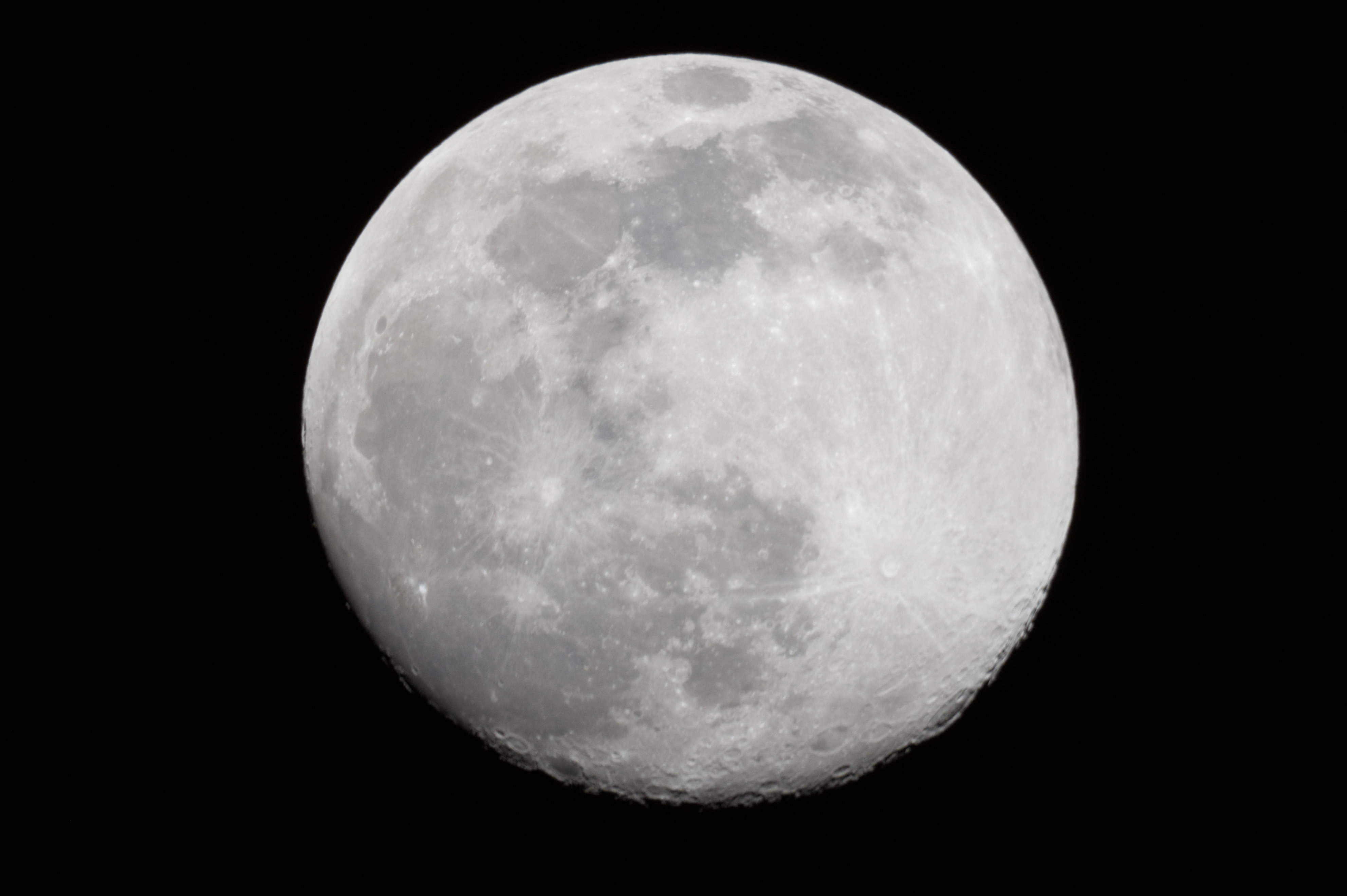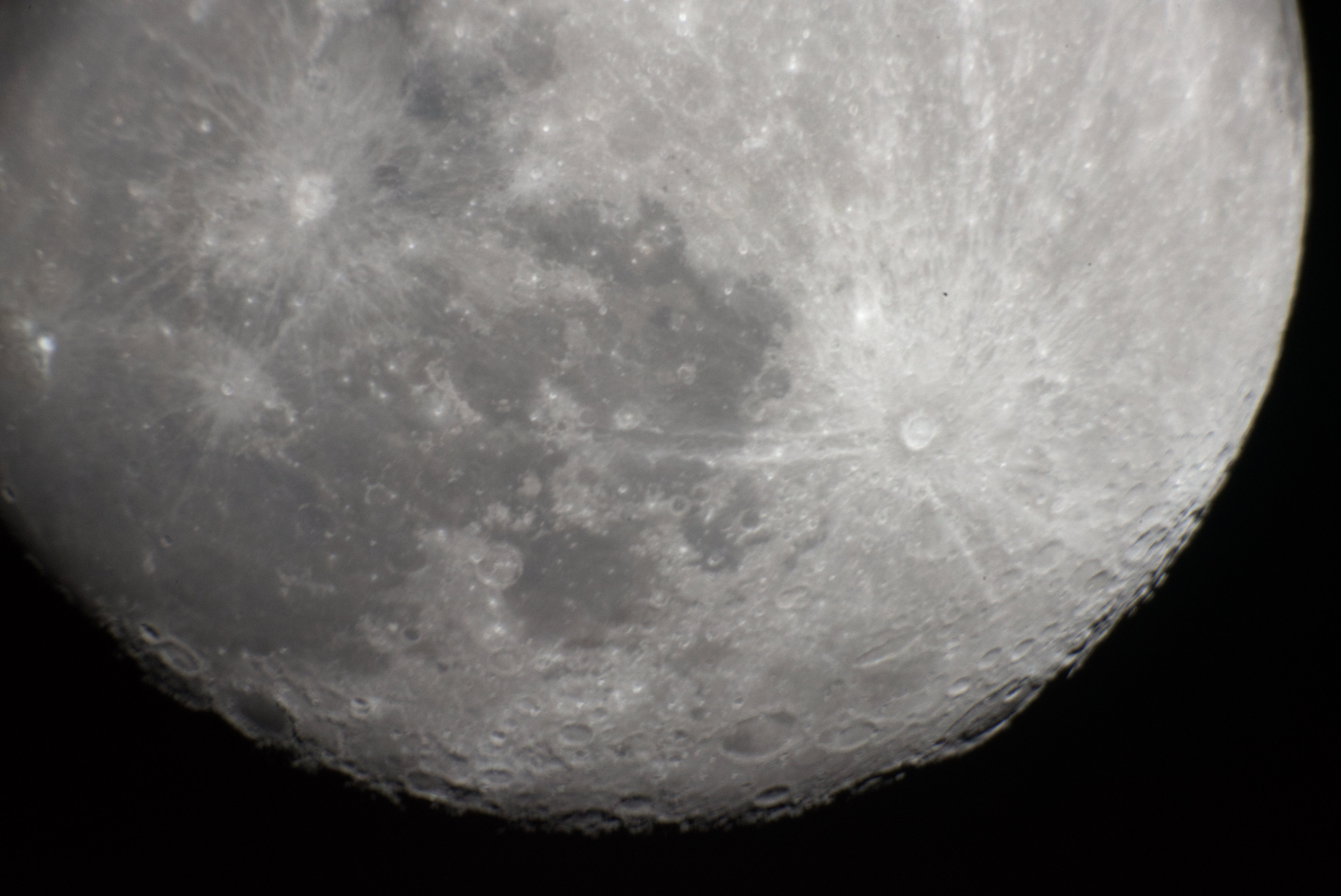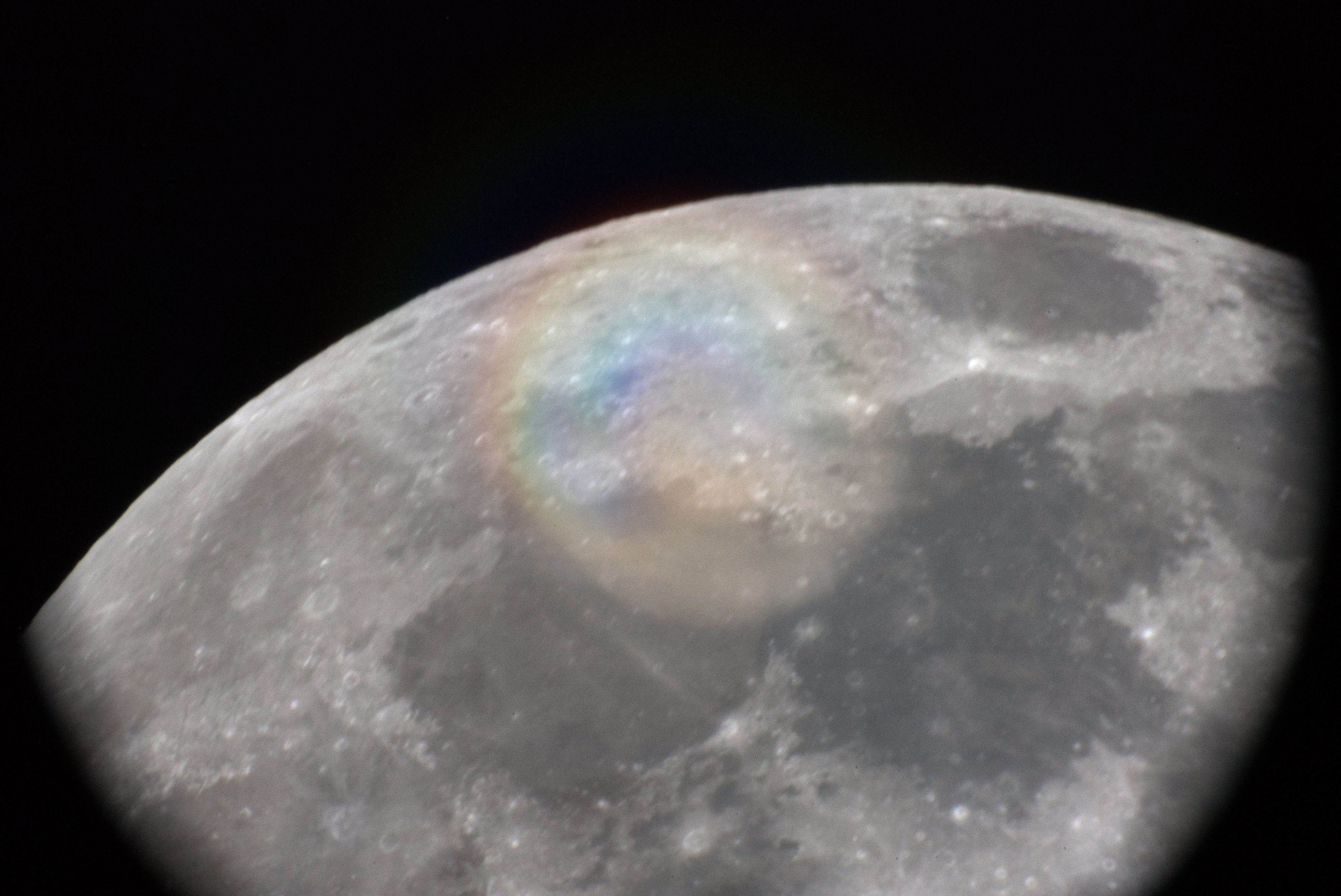Photographing the moon with a Meade 2x telenegative
Tonight I photographed the waxing gibbous moon using a Celestron C5 on an inexpensive manual alt-azimuth mount (a Celestron #93607) and a Nikon D750.
First shot: no Barlow (1x)
I took my first shot of the full disk at the prime focus. I took this shot using a DX crop because this setup vignettes badly in full frame and because the area that would vignette was black pixels anyway. The equipment stacked as follows:
- Celestron C5
- Celestron #93653-A 1-1/4 inch visual back
- Celestron #93625 T-adapter with Celestron 93402 T-ring for Nikon
- Nikon D750 shooting in DX (1.5x) crop
Focus could be a little sharper but the results are pretty good. This is the full resolution image with only an exposure adjustment applied:

Second shot: Barlow configured for ~2x magnification
For my second shot I added a Meade Series 4000 #126 short-focus Barlow, an older example made in Japan. In this configuration the Barlow produces a roughly 2x magnification. The vignetting situation with the Barlow is much better and bright pixels fill the frame, so I switched from a DX crop to a full frame shot:
- Celestron C5
- Celestron #93653-A 1-1/4 inch visual back
- Meade Series 4000 #126 short-focus Barlow
- Celestron #93625 T-adapter with Celestron 93402 T-ring for Nikon
- Nikon D750 shooting in FX (full frame)
Results are still pretty good. Focus could again be sharper. This is the full frame resampled to DX resolution with an exposure adjustment applied:

Third shot: Barlow configured for ~3x magnification
For my third shot I added a star diagonal to increase the distance between the Barlow lens and the image plane, raising the magnification to roughly 3x. Meade explicitly mentions this configuration in its product description. I kept shooting in full frame to characterize the Barlow’s 3x performance as compared to 2x:
- Celestron C5
- Celestron 93653-A 1-1/4 inch visual back
- Meade Series 4000 #126 short-focus Barlow
- Celestron #93571 1-1/4 inch dielectric star diagonal
- Celestron #93625 T-adapter with Celestron 93402 T-ring for Nikon
- Nikon D750 shooting in FX (full frame)
Results are not good. Judicious cropping and composition could easily take care of the vignetting issue, but there is a bizarre colorful ghost / flare at the center of the image. The Barlow cannot be used for imaging in this 3x mode. This is the full frame resampled to DX resolution with an exposure adjustment applied and the orientation corrected:

Remarks
Visual results
Although the Barlow is unsuitable for imaging when placed before the star diagonal, results are quite satisfactory for visual observing:
- Celestron C5
- Celestron 93653-A 1-1/4 inch visual back
- Meade Series 4000 #126 short-focus Barlow
- Celestron #93571 1-1/4 inch dielectric star diagonal
- Celestron #93423 9mm X-Cel LX
A 9mm eyepiece with a 3x Barlow is a little overpowered for a Celestron C5 but the image is certainly bright enough to demonstrate that the central ghost / flare issue does not exist.
Convenience and collimation
The Celestron #93625 1-1/4 inch T-adapter is far more convenient for experimentation and casual imaging than the Celestron 93633-A T-adapter that screws directly onto the back of the scope. For terrestrial observing it’s incredibly quick to switch between an eyepiece in an erecting prism and a camera with the T-adapter attached: Just unscrew the set screws on the visual back, pop one out and pop the other in. For lunar photography it’s great to be able to easily introduce standard Barlow lenses into the imaging stack.
This convenience comes at a cost. The camera assembly sags enough in this configuration that the central obstruction appears significantly off-center when the scope is defocused. Switching to a twist- or click-lock visual back and a Barlow that offers a built-in T-mount may provide better alignment when using 1-1/4 inch accessories.